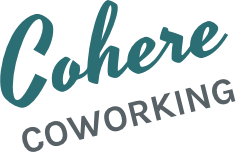co-loco—an Australian organization that connects independent workers with shared desk space—shared a snippet of Steven Johnson’s book, Where Good Ideas Come From in a recent blog post. In his book, Johnson traces the ways innovation happens—and why some environments are particularly good for generating new, creative ideas. Not only does Johnson look at environments in which people are innovative—he also looks to nature for clues (such as the coral reef and rain forests). And he argues that one of the patterns in innovation is physical density.
So, then, what does physical density have to do with innovation? And what does a (physical) space of innovation really look like?
In fact, it looks a lot like a coworking space.
And here’s why:
co-loco’s blog post pulled out three points about physical density from Johnson’s book:
- Physical density creates informal networks of influence.
- Physical density allows companies to easily grow and contract and share employees.
- Physical density fosters diversity.
“Physical density” simply means grouping people together in the same physical space. Coworking spaces are meant to create physical density—they are spaces for independents to work together.
Physical density in coworking spaces fosters innovation because:
- it allows coworkers to network with each other.
- it can ignite the spark for coworkers to collaborate on projects or refer work to each other—helping them to grow their businesses.
- it encourages coworkers from diverse personal and professional backgrounds to meet, connect, work, brainstorm and collaborate.
Encouraging creativity may be as simple as gathering people together—and this happens at Cohere during focus groups, workshops, The Business of Freelance breakfasts and other impromptu lunches, brainstorms, or conversations. And the added bonus of “physical density” at Cohere is the opportunity for long-lasting relationships and collaboration. Putting creative minds together is when innovation can happen in coworking spaces.
